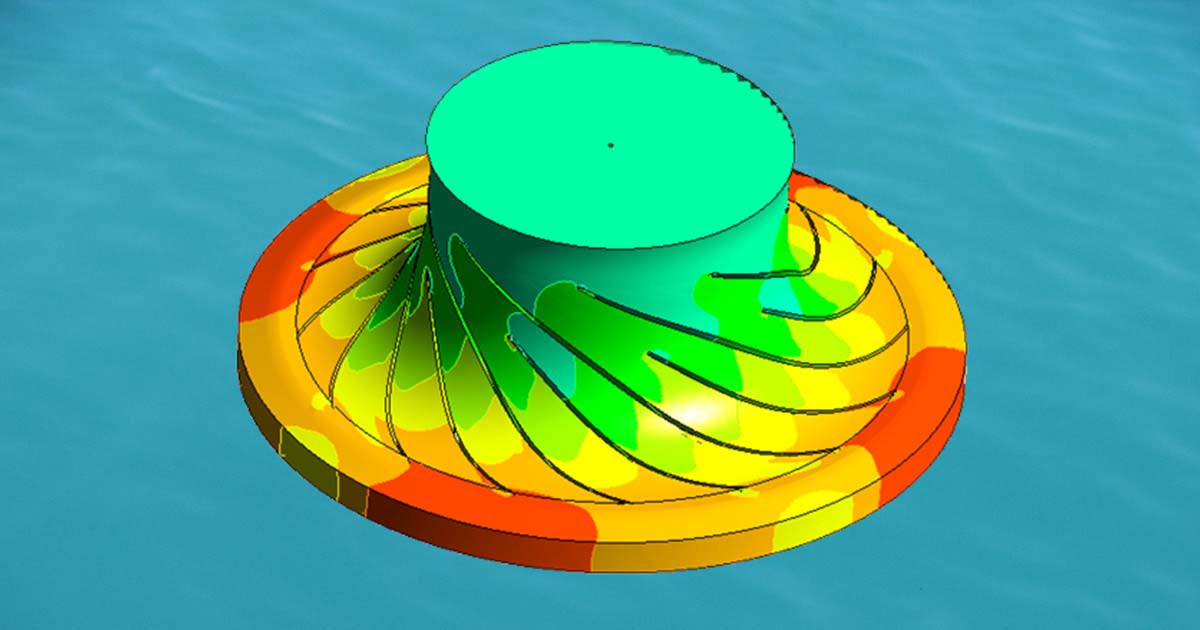Thursday, December 30, 2010
CFD solution services for turbo-machinery industry
By
Vijay Mali

Responding to ever growing needs from customer, CCTech has added world's leading turbo-machinery analysis tool ANSYS CFX
in its portfolio. Till December 2010, CCTech offered various CFD solution services based on ANSYS
FLUENT - A general purpose fluid dynamics program. Over two decades of experience in rotating
machinery simulation has ensured that ANSYS CFX software provides all the models and infrastructure
for accurate, robust and efficient modeling of all types of pumps, fans, compressors, and gas
and hydraulic turbines.
The transient rotor–stator capability of ANSYS CFX resolves the true transient interaction between components for maximum
accuracy. It can be applied to individual pairs of blade passages or to the entire 360-degree
machine. Setup and use is as simple as it is with the other frame-change models, and it is possible
to combine transient and steady-state frame change interfaces in the same computation. Complementing
this is the inclusion of second-order time differencing, which delivers greater transient accuracy.
The stage interface model is a simpler model that provides faster solutions than the full transient
rotor-stator model. It enables a steady-state computation to be used by performing circumferential
averaging of the variables at the interface.
Various options are available to accurately capture transient interaction between rotating and stationary components. This
includes a selection of transient blade row interaction models for modeling the interaction between
components in which the number of blades is unequal and, therefore, the pitch-wise extent of
the geometrically periodic blade passages is also unequal. This powerful set of models allows
significantly faster solution times with reduced-memory requirement compared to transient simulations
of the full blade rows.
Another way to model the interaction of rotating and stationary parts is with ANSYS CFX software's frozen-rotor model, which
is useful when the circumferential flow variation that each blade passage experiences is large
during a full revolution. With this option, computations are performed in a steady-state mode,
based on the assumption of quasi-steady flow around the rotating component at every rotation
angle. The additional rotational effects (Coriolis and centrifugal terms) are included in the
rotating regions, and the frame change across the sliding interface is accommodated automatically
when linking the different regions of the solution.
About author
Vijay Mali
Vijay is a technology explorer, a visionary and a product maker. As CBO of the company, he plays a critical role in defining the growh path of the company. He also leads the center of excellence (CoE) department at CCTech which is responsible for exploring new technologies & building a strategy to bring it to common designers. Vijay has over 15 years of experience in providing the CFD solutions for many complex problems. He has conceptualized many software solutions including the Pedestrian Comfort Analysis & Control Valve Performer app developed on simulationHub platform. Vijay is known for his transformative way of teaching and trained more than 500 candidates on complex topics like computational fluid dynamics and design optimization. He has delivered talks at various events and engineering colleges about CFD and its use in design optimization of a product. Vijay holds a master degree in aerospace engineering from Indian Institute of Technology (IIT Bombay).
Comments
Recent posts




